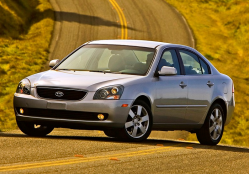
— A Kia unintended acceleration lawsuit has been dismissed for a second time after the first dismissal was appealed.
According to the Kia unintended lawsuit, the December 31, 2015, crash killed three vehicle occupants, including Kia Optima driver Mary Jean Parks, 83.
Parks was driving her 2008 Kia Optima in Winchester, Tennessee with her 75-year-old sister. The lawsuit says she was known to be a careful and cautious driver, and the day of the crash the weather was clear. The posted speed limit was 30 miles per hour.
The Kia Optima suddenly accelerated to 90 mph, and eyewitnesses testified the Optima was “not slowing down” and was “going . . . too fast to be able to stop in time with the red light.”
One eyewitness said the Kia Optima “just kept getting faster and faster” and was “zigging in and out of these cars.” In addition, a different eyewitness recalled hearing “the engine revving . . . up and then down.”
The Kia Optima crashed into a 2003 Ford Windstar stopped at a red light and propelled the Ford Windstar into a Ford F-150 pickup truck. A photo of the Windstar shows severe damage to the minivan.
The lawsuit alleges at impact, the "Kia’s vehicle’s readings were 4,300 rpm on the tachometer and 92 miles per hour on the speedometer; the electronic throttle control angle was around 80%."
Killed in the crash were the Kia Optima driver, Mary Parks, as well as two seven-year-old twin boys in the Ford Windstar.
The families of the deceased filed the $95 million lawsuit by alleging defects in the Kia Optima caused unintended acceleration which caused the deadly crash.
Additionally, the National Highway Traffic Safety Administration was asked to investigate the crash.
The lawsuit claims multiple problems could have caused the Optima to suffer from unintended acceleration.
- A worn clock spring
- A brake-lamp stop switch issue
- A voltage drop
- Malfunctions in the cruise control
- Brake issues
- Unforeseen issues with the engine control unit
- Electromagnetic interference
However, Ford argued it knew the cause was a driver mistakenly pressing the accelerator pedal because none of the surveillance camera footage showed the brake lights illuminated.
Additionally, a witness said “the engine [was] revving . . . up and then down.” This could indicate a driver pumping the accelerator pedal while believing they are pumping the brake pedal.
The original Kia unintended acceleration lawsuit was dismissed after the judge ruled the plaintiffs didn't provide evidence that a specific defect caused the Kia Optima to accelerate.
However, the Kia acceleration lawsuit dismissal was appealed to the 6th U.S. Circuit Court of Appeals. In an example of how the same laws can mean different things to different judges, a divided appeals court ruled the case should not have been dismissed.
The appeals court also found two expert plaintiff witnesses should have been allowed to present their evidence. The lawsuit was sent back to the lower district court.
The district court has now dismissed the lawsuit again by finding experts for the plaintiffs failed to provide evidence of a specific defect that caused the Kia Optima to accelerate and crash.
The Kia unintended acceleration lawsuit was filed in the U.S. District Court for the Eastern District of Tennessee: Hill et al., v. Kia Motors et al.




